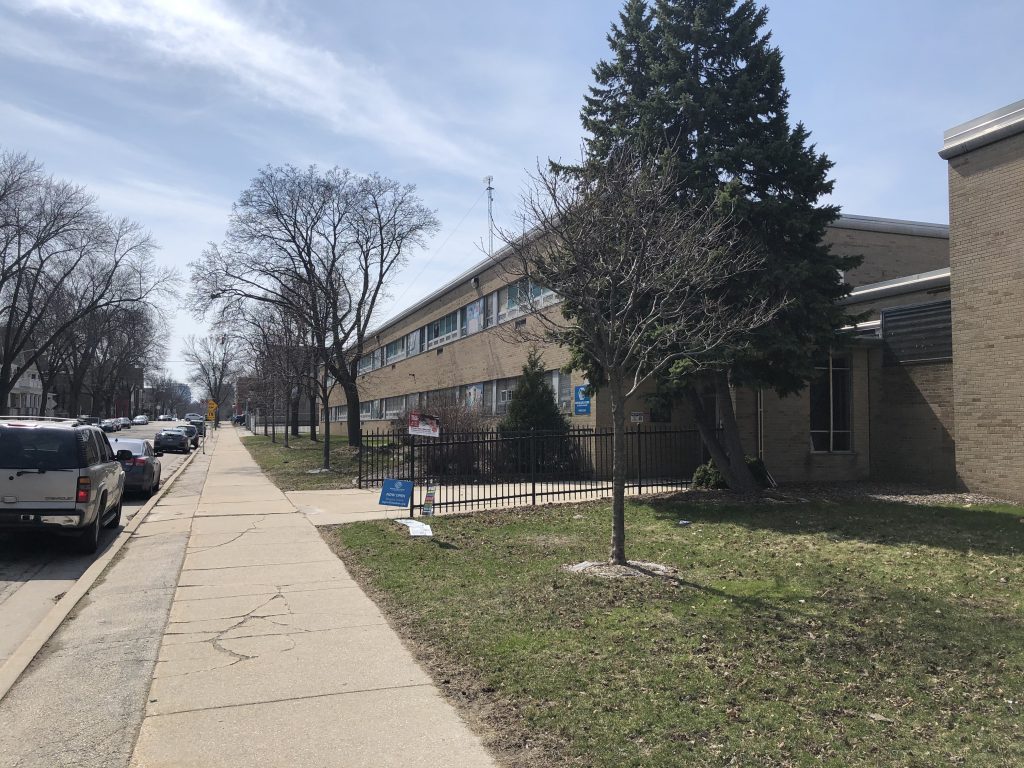MPS Faces Teacher, Staff Shortage
System may be short as many as 600 staff.
Milwaukee Public Schools faces a shortage of teachers and other educators that may involve as many as 600 positions. Figures provided by the administration do not show a shortage that high, but other sources paint a more dramatic portrait of the situation.
Adria Maddaleni, chief human resource officer for MPS, states that just under 200 teacher vacancies exist, mostly classroom teachers managing individual classrooms. However, the vacancy numbers do not include openings in areas such as guidance counselors, social workers, speech pathologists and some other support staff that work with students. Nor is the administration counting the over 400 unlicensed teachers with emergency permits. Taking these numbers together shows a shortage of over 600 teachers.
Matthew Chason, senior director of the MPS Office of Accountability and Efficiency, which is independent of the superintendent and answers only to the school board, confirmed Urban Milwaukee’s analysis showing a shortage of at least 600 teaching staff.
The administration’s figures also do not list as vacancies situations where teachers have not been requested to fill an opening by the individual schools. Chason has found inconsistencies between what schools have been budgeted for and what they are asking for in staffing. It is not known why some schools may not ask for teachers who have been budgeted for their schools. There is no economic incentive for doing so. In an interview with Urban Milwaukee, MPS Superintendent Keith Posley said he does not know why such inconsistencies should exist or if they do at all. However, he has asked Chason, Maddaleni, and Martha Kreitzman, chief financial officer, to get together and work out the inconsistencies between actual and budgeted staffing needs.
The Milwaukee Teachers’ Education Association (MTEA) offered its own perspective. Says union president Amy Mizialko: “We certainly hear from our members frequently that positions that they know need to be filled are not posted anywhere that they can find. We would not be surprised if that added up to hundreds of teacher positions and hundreds upon hundreds of non-teacher professionals, paraprofessionals, safeties, building service helpers, food service workers, secretaries, and other vital job classes.” Which could mean the shortage is even more than 600 positions.
MPS is actively recruiting prospective teachers even if they presently have no teaching license and providing them with additional training after school and on weekends. Some incoming teachers may be licensed in another state or country, but need additional credits to meet Wisconsin requirements. Posley points to teachers coming from Mexico or Nigeria handling positions at Milwaukee schools. However, most unlicensed permit teachers have a bachelor degree with few if any educational teaching credits.
The district is in a no-win situation. If the administration underplays the teacher shortage, the public and political operatives may believe that the MPS teacher shortage is manageable. If the administration rings the alarm bells, it may undercut parents’ confidence in the system, and they may begin to look elsewhere for the education of their children.
School board members at meetings have said they have heard that particular classes have 40 or more students. The administration has questioned some of these examples, but everyone agrees that class sizes are larger than what the district would like to see. Sometimes, this comes down to school choices. For example, a high school may elect to offer an advanced math class with only 15 students. That, in turn, may result in packing a freshmen math class with 40 students.
For years, schools have often relied on paraprofessionals to fill in for absent teachers who call in sick for a day or two. This has been done for a couple of reasons. First, paraprofessionals in the school know the students better than a substitute teacher from the outside and can often conduct classes more effectively on a short-term basis. Second, substitute teachers are often not available, and schools must use paraprofessionals as fill-in out of necessity. The end result is that paraprofessionals are then not available to fulfill their normal duties some of which are supporting other teachers in their classrooms. So, on a daily basis, the district is run with a shortage of paraprofessionals in their normal roles.
Posley says the district is pushing heavily to move paraprofessionals into the teaching ranks. These future teachers have the advantage of already working with MPS students in their present paraprofessional positions.
Urban Milwaukee recently reported on the teacher shortage in Wisconsin and across the nation. The shortage is most acute in urban and rural districts while wealthier districts are able to fully staff their classrooms with licensed teachers. Finding enough teachers to fill classrooms equitably may be a challenge for years to come.
Posley believes one of the few short-term solutions to the teacher shortage would be for the state to allow retired teachers to come back into the classroom even if only for a couple of years. The Legislature would have to allow returning retired teachers not to have their present state retirement benefits cut. Posley says that even states with conservative legislatures are considering or have already enacted such legislation.
In the meantime, there may be no school district in Wisconsin that faces greater staffing challenges than Milwaukee Public Schools.
If you think stories like this are important, become a member of Urban Milwaukee and help support real, independent journalism. Plus you get some cool added benefits.
K-12 Education
-
The Unknown MPS Office
 Jun 26th, 2024 by Terry Falk
Jun 26th, 2024 by Terry Falk
-
Who Is Eduardo Galvan?
 Jun 19th, 2024 by Terry Falk
Jun 19th, 2024 by Terry Falk
-
How Will School Board Hire New Superintendent?
 Jun 10th, 2024 by Terry Falk
Jun 10th, 2024 by Terry Falk























Seems like a good time to break up this failing district into smaller districts to improve outcomes.
@ Ryan – how would breaking MPS into smaller districts improve outcomes? The GOP claims this will ‘fix’ MPS, but I see no evidence offered that smaller districts would do any better at solving the problems faced.
Wisconsin Policy forum on education: “Wisconsin’s spending ranked it 25th highest among the 50 states in 2020. The caps on school revenues in the 2021-23 state budget may drive additional drops in Wisconsin’s ranking in upcoming years.”
https://wispolicyforum.org/research/wisconsins-ranks-in-school-spending-tax-burden-fall-together/
Wisconsin Policy forum on city government: “city officials warn of a possible 25% reduction in staffing levels to meet the pension obligation when all available budget tactics have been exhausted. Incredibly, the crisis has been averted for up to three years through the arrival of $394.2 million from the federal American Rescue Plan Act (ARPA).
* can’t wait for 2025
https://wispolicyforum.org/research/budget-brief-2023-proposed-city-of-milwaukee-budget/
Ryan is right. Break it off and sell the teaching to for profit education. This way the meager amount of tax dollars can go to grifters and christian domimiomists. The nazi party of WI lead by Robin Vos likes this idea.
Three decades of Republican promoted “reforms” with billions of taxpayer dollars spent on religious choice schools have not resulted in any “miracle educational initiatives” which the Republican’s claim will happen. Their only policy is financing with the taxpayer paying for the religious indoctrination of students for church communities and families who do choose not to spend their money for their children’s religious education.